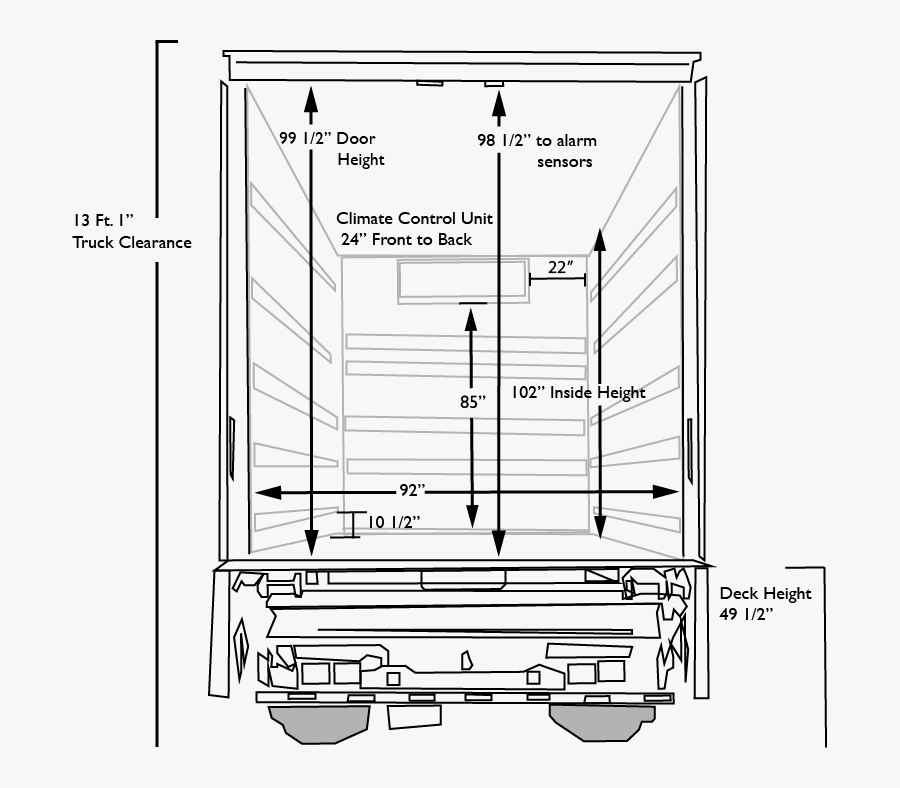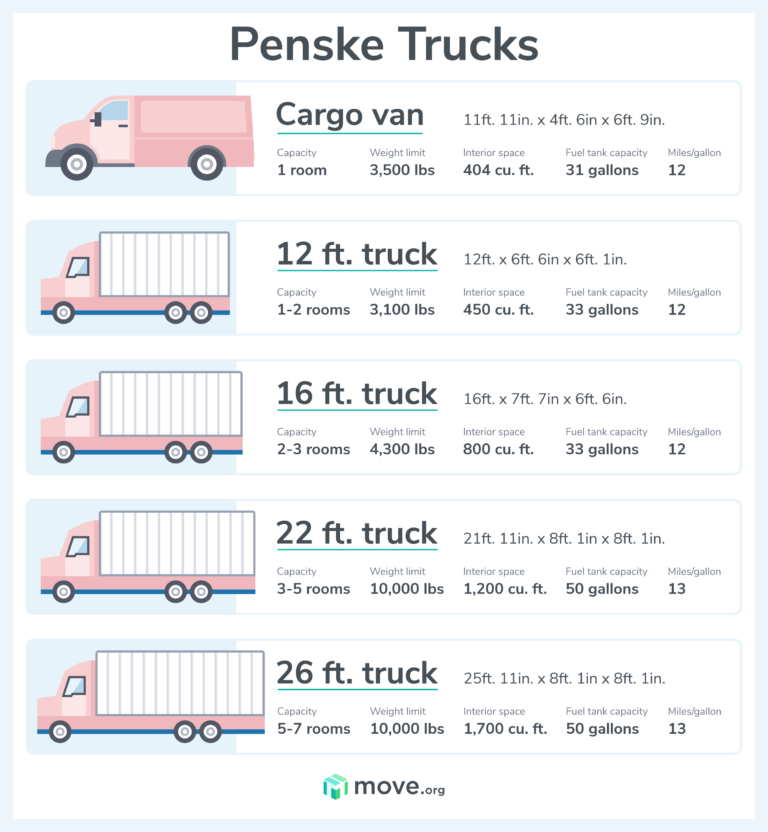26ft Box Truck Interior Dims: Your Ultimate Guide to Space and Efficiency types.truckstrend.com
When it comes to moving, transporting goods, or managing logistics, understanding the precise dimensions of your vehicle is paramount. Among the most commonly utilized vehicles for these tasks is the 26ft box truck. Often hailed as the largest non-CDL (Commercial Driver’s License) truck available for rent or purchase, its interior dimensions, or "dims," dictate everything from how much you can haul to how efficiently you can pack.
This comprehensive guide will delve deep into the interior dimensions of a 26ft box truck, exploring the nuances that affect usable space, offering practical advice for maximizing capacity, and providing insights crucial for anyone planning a move or managing a freight operation. Knowing these dims isn’t just about fitting your belongings; it’s about optimizing cost, time, and safety.
26ft Box Truck Interior Dims: Your Ultimate Guide to Space and Efficiency
Understanding the Standard 26ft Box Truck Interior Dimensions
While a "26ft" box truck implies a specific length, it’s crucial to understand that this typically refers to the exterior length of the cargo box, and even then, it can be a nominal figure. Interior dimensions vary slightly between manufacturers (e.g., U-Haul, Penske, Budget, Ryder, Isuzu, Hino, Ford, Freightliner) and even specific models or years. However, a general range provides an excellent baseline for planning.
Here are the typical interior dimensions you can expect:
- Interior Length (Usable Floor Space): Approximately 25 ft 6 inches to 26 ft 2 inches. This is the measurement from the rear door to the bulkhead separating the cargo area from the cab. Keep in mind that "Mom’s Attic" or "Attic" space above the cab adds extra, albeit shallower, length.
- Interior Width (Wall-to-Wall): Approximately 8 ft 0 inches to 8 ft 3 inches. This is the maximum width of the cargo area. However, it’s critical to factor in features like E-track systems or logistics posts, which can slightly reduce the effective usable width for very wide items.
- Interior Height (Floor to Ceiling): Approximately 8 ft 0 inches to 8 ft 5 inches. This measurement is from the main floor to the ceiling. Again, variations exist, and the presence of roof bows or insulation can slightly reduce this at certain points.
- Cubic Capacity: The total volume is calculated by multiplying these dimensions (Length x Width x Height). For an average 26ft truck, this typically ranges from 1,600 to 1,700 cubic feet. This figure is vital for estimating how many rooms of furniture or how much cargo can fit.

Key Components Affecting Usable Space
Beyond the primary length, width, and height, several interior features significantly impact how you can utilize the available space:
- Wheel Wells: These are perhaps the most common "gotcha" for those unfamiliar with box trucks. Protruding into the cargo area on either side of the floor, they house the truck’s rear wheels.

- Height: Typically 10-14 inches from the floor.
- Width (each well): Approximately 18-24 inches.
- Length (along the floor): Can be 4-5 feet long.
- Impact: They effectively reduce the floor width in their section, requiring careful packing strategies. You’ll need to pack around them, using the space above for lighter items or filling gaps with smaller boxes.

- Roll-Up Door vs. Swing Doors: The type of rear door affects the clear opening dimensions.
- Roll-Up Door: Most common in rental trucks. These doors roll up into a compartment above the opening. While convenient, they slightly reduce the clear opening height (typically 7 ft 6 inches to 8 ft 0 inches) and sometimes the width due to side tracks.
- Swing Doors (Barn Doors): Less common on rentals, but found on some commercial trucks. These open fully to the sides, offering the maximum clear opening height and width (often matching the interior height/width). If you have very tall or wide items, swing doors are advantageous.
- Attic / Mom’s Attic: This is the space extending over the truck’s cab.
- Height: Typically shallower than the main cargo area, ranging from 3-4 feet.
- Depth: Extends 3-4 feet back from the front wall.
- Impact: Ideal for lighter, bulkier items like mattresses, box springs, or oddly shaped furniture that wouldn’t fit well elsewhere. It effectively adds valuable cubic feet to the truck’s total capacity.
- E-Track and Logistics Posts: These metal rails or vertical slots are mounted on the interior walls.
- Purpose: Used with straps, bars, or shoring beams to secure cargo and prevent shifting.
- Impact: While incredibly useful for safety, the tracks themselves can protrude slightly, marginally reducing the effective interior width if you’re trying to fit something exactly 8 feet wide.
The Importance of Knowing Your Dims
Understanding these interior dimensions goes far beyond simple curiosity; it’s fundamental for successful logistics:
- Accurate Loading & Packing: Knowing the exact dimensions allows you to create a packing plan, ensuring all your items will fit. This prevents costly surprises, delays, and potential damage to your belongings. You can strategize how to load large furniture, appliances, and stack boxes efficiently.
- Cost Efficiency: Overestimating your needs might lead you to rent a larger, more expensive truck than necessary. Underestimating means you might need to make multiple trips, incurring additional fuel, mileage, and labor costs. Precise dim knowledge ensures you pick the right truck for a single, efficient trip.
- Safety & Compliance: Knowing the interior volume helps you understand the truck’s payload capacity. While the truck might have the space, it also has a weight limit. Understanding dims helps in distributing weight evenly, preventing dangerous shifting during transit, and staying within legal weight limits.
- Logistics Planning: For businesses, accurate dimensions are critical for calculating freight costs, optimizing warehouse space, and planning delivery routes. It impacts how many pallets can fit, how many loads are required, and ultimately, the profitability of a transport operation.
Practical Tips for Maximizing Space
Even with a large 26ft truck, efficient packing is an art. Here are some actionable tips:
- Measure Your Largest Items: Before you even step into the truck, measure your bulkiest items (sofas, refrigerators, king-size beds). This will inform your loading strategy and highlight any potential fit issues.
- Utilize Vertical Space: Box trucks are tall for a reason. Stack boxes securely and utilize the full height, especially in the areas free from wheel wells.
- Load Heaviest Items First and Low: Place heavy items (appliances, large furniture) on the truck floor, distributed evenly, and as close to the cab as possible for better weight distribution and stability.
- Disassemble When Possible: Beds, tables, and some shelving units can be disassembled to take up less space and be easier to maneuver. Keep all hardware organized!
- Use Moving Blankets and Straps: Protect your items from scratches and secure them with E-track straps or rope to prevent shifting during transit. Don’t leave empty spaces that allow items to move freely.
- Plan Your Load Diagram: Mentally (or physically) map out where everything will go. Think about access – what items will you need first at your destination? Load those last.
Challenges and Solutions
Despite careful planning, challenges can arise:
- Inaccurate Estimates: Relying solely on a truck rental website’s "average" dims can be risky.
- Solution: When possible, ask the rental company for the exact dimensions of the specific truck you’ll be using, or bring a tape measure to the lot for a quick verification before driving away.
- Irregularly Shaped Items: Grand pianos, oddly shaped sculptures, or custom furniture can be difficult.
- Solution: Measure these items meticulously from all angles. Consider professional movers who specialize in such items or explore crating options.
- Weight vs. Volume: A 26ft truck might have ample space, but its payload capacity (how much weight it can carry) is finite, typically 10,000-12,000 lbs. You can fill the truck with light items before hitting the weight limit, or vice-versa with dense items.
- Solution: Estimate the weight of your heaviest items. If in doubt, check the truck’s Gross Vehicle Weight Rating (GVWR) and empty weight to calculate its true payload.
- Door Opening Limitations: A large sofa might fit inside the truck, but getting it through the rear door can be a challenge.
- Solution: Always check the clear opening dimensions of the rear door, especially the height. For tall items, consider tilting them or, if available, choosing a truck with swing doors.
Comprehensive 26ft Box Truck Interior Dims Overview
This table summarizes typical dimensions and their operational value, providing a "price" in terms of efficiency, cost savings, and risk mitigation.
| Parameter | Typical Range (Approx.) | Average Value (Approx.) | Notes/Implications | Operational Value / "Cost Implication" |
|---|---|---|---|---|
| Interior Length (Floor) | 25′ 6" – 26′ 2" | 26′ 0" | Main cargo floor space, from rear door to bulkhead. | High: Maximizes single-trip efficiency for large volumes, saving on fuel, mileage, and labor costs for additional trips. |
| Interior Width (Wall-to-Wall) | 8′ 0" – 8′ 3" | 8′ 2" | Maximum width inside the cargo area. Watch for E-track. | High: Critical for fitting wide furniture (sofas, king beds) and optimizing pallet counts (can typically fit two 48" pallets side-by-side). |
| Interior Height (Floor-Ceiling) | 8′ 0" – 8′ 5" | 8′ 3" | Max vertical stacking height. | High: Enables efficient vertical stacking, reducing the overall footprint of your load and maximizing cubic utilization. |
| Usable Cubic Feet (Volume) | 1,600 – 1,700 cu ft | 1,650 cu ft | Total estimated cargo volume (L x W x H). | Very High: Direct correlation to how much you can move. Accurately matching volume to needs prevents over/under-sizing truck rental. |
| Rear Door Opening Width | 7′ 6" – 7′ 10" | 7′ 8" | Clear width for loading. Can be slightly less than interior width. | Medium: Avoids frustration and potential damage to items or truck when loading bulky items. Saves time and labor. |
| Rear Door Opening Height | 7′ 6" – 8′ 0" | 7′ 9" | Clear height for loading. Roll-up doors reduce this vs. swing doors. | Medium: Essential for tall appliances (refrigerators) or large furniture. Prevents costly damages and difficult maneuvers. |
| Wheel Well Height (from floor) | 10" – 14" | 12" | Height of the protrusion into the cargo area. | High: Crucial for packing strategy. Misunderstanding leads to wasted space or difficult loading. Optimizing saves packing time. |
| Wheel Well Width (each) | 18" – 24" | 20" | Width of each wheel well along the floor. | High: Impacts floor-level packing. Knowing allows for efficient stacking around them, maximizing usable floor space. |
| "Mom’s Attic" Height | 3′ 0" – 4′ 0" | 3′ 6" | Shallower space above the cab, ideal for lighter items. | Medium: Adds valuable extra space for awkward or lighter items (mattresses, boxes), reducing overall load time and preventing extra trips. |
| Payload Capacity (Weight) | 10,000 – 12,000 lbs | 10,500 lbs | Max weight the truck can safely carry (cargo + passengers). | Critical: Prevents overloading, which can lead to fines, mechanical issues, accidents, and increased wear/tear. Ensures safety and legal compliance. |
Frequently Asked Questions (FAQ)
Q: Is a 26ft box truck exactly 26 feet long inside?
A: No, typically the 26ft refers to the nominal exterior length of the cargo box. The interior usable floor length is usually closer to 25 ft 6 inches to 26 ft 2 inches. Always account for slight variations.
Q: What’s the typical cubic capacity of a 26ft box truck?
A: Most 26ft box trucks offer between 1,600 to 1,700 cubic feet of usable cargo space, depending on the manufacturer and specific interior dimensions.
Q: How do wheel wells affect packing in a 26ft truck?
A: Wheel wells are significant protrusions on the floor of the truck, typically 10-14 inches high, and about 18-24 inches wide. They reduce the effective floor width for a section of the truck. You’ll need to pack around them, often using the space above them for smaller boxes or lighter items.
Q: Can I fit a king-size bed in a 26ft truck?
A: Yes, a king-size mattress (approx. 76" W x 80" L) will fit inside a 26ft box truck. Its width (76 inches or 6 ft 4 inches) is well within the typical 8 ft interior width. You can often stand it on its side against a wall or lay it flat if other items permit.
Q: What’s the difference between a roll-up and swing door on a 26ft truck?
A: A roll-up door rolls up into a compartment above the door opening, which can slightly reduce the clear height of the opening. Swing doors (or barn doors) open outwards like regular doors, typically providing a larger, clearer opening height and width, matching the interior dimensions more closely. Most rental trucks have roll-up doors.
Q: How much weight can a 26ft box truck hold?
A: While the interior dimensions dictate volume, the weight capacity (payload) is a separate but equally important factor. A typical 26ft box truck can carry between 10,000 to 12,000 pounds (5 to 6 tons) of cargo. Always check the specific truck’s Gross Vehicle Weight Rating (GVWR) and empty weight to determine its exact payload capacity.
Conclusion
Mastering the "26ft Box Truck Interior Dims" is more than just memorizing numbers; it’s about understanding the practical implications of every inch and foot. From the overall cubic capacity to the subtle impacts of wheel wells and door types, each dimension plays a critical role in the efficiency, cost-effectiveness, and safety of your moving or logistics operation.
By taking the time to understand these interior dimensions, planning your load meticulously, and applying the practical tips outlined in this guide, you can transform a potentially stressful task into a streamlined, successful endeavor. Accurate dim knowledge empowers you to choose the right truck, pack smarter, and move with confidence, ensuring your goods arrive safely and your project stays on track and within budget.
